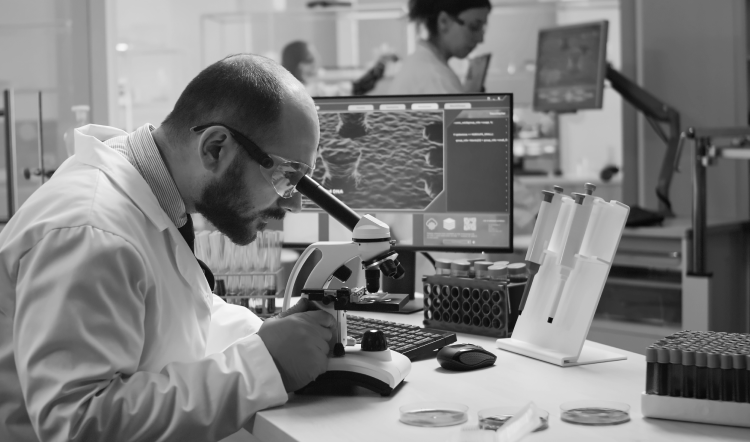
Future of Plasma Fractionation: Cohn Process vs. HaemaFrac®
The global plasma fractionation market in terms of revenue was estimated to be worth $29.0 billion in 2023 and is poised to reach $40.4 billion by 2028, growing at a CAGR of 6.9% from 2023 to 2028. Blood plasma, the golden liquid coursing through our veins, holds a treasure trove of proteins essential for life. Blood Plasma is critical for our daily Health and Medical research. These proteins defend against infections, maintain blood volume, and perform countless other critical tasks.
But how do we extract these champions from the vast sea of plasma?
In this blog post, Rodller delves into the two methods of plasma fractionation: the Cohn process, a well-established method, and the challenger HaemaFrac® from Aegros, a revolutionary innovative technology. We’ll understand their intricate mechanisms, unveil their strengths and weaknesses, and ultimately explore why HaemaFrac® might be the future of plasma fractionation.
The Cohn Process: A Multi-Step Approach to Plasma Protein Separation
Developed by Dr. Edwin J. Cohn during World War II, the Cohn process emerged as a beacon of hope in a time of great medical need. Facing a shortage of whole blood for transfusions, Dr. Cohn’s ingenuity led to the development of a method for isolating albumin, a protein crucial for maintaining blood volume. The process, though seemingly simple, is a masterpiece of controlled chaos.
Imagine a culinary expert meticulously separating ingredients in a complex broth. The Cohn process operates similarly. It relies on the varying solubility of different plasma proteins under specific conditions like pH (acidity/alkalinity), temperature, and ethanol concentration.
This is a multi-step process that involves:
The Chilling Touch: Blood plasma is first frozen, a crucial step that sets the stage for the protein ballet.
The pH Play: The pH of the solution is meticulously adjusted, influencing how readily different proteins interact with the surrounding environment.
The Temperature Tango: The temperature is carefully lowered, further affecting protein solubility.
The Ethanol Entrance: as its concentration increases, it acts like a magnet, attracting specific proteins and causing them to clump together and precipitate out of the solution. These precipitates are then removed, leaving behind the desired protein – typically albumin – in the remaining solution.
Advantages of the Cohn process
The Cohn process, despite its age, deserves a standing ovation for several reasons:
Pioneering Spirit: It paved the way for the entire plasma fractionation industry, enabling the production of life-saving therapies like albumin for treating shock, burns, and liver diseases.
Adaptability: Variants of the Cohn process have been developed to isolate other crucial plasma proteins like immunoglobulins, our body’s natural defense system against infections.
Accessibility: The relatively straightforward nature of the process made it accessible to a wider range of settings, particularly in the early days of plasma fractionation.
The Cohn Process: Facing the Challenges of Time
The Cohn process faces limitations that hinder its future potential:
The Time Crunch: We mentioned the multi-step nature impacting efficiency. This translates to longer processing times, requiring more equipment, personnel, and ultimately increasing production costs.

The Ethanol Enigma: Ethanol plays a crucial role in protein precipitation. But it can be harsh on the proteins themselves. The process requires additional steps to remove residual ethanol, further extending processing time and potentially affecting protein quality.
Lower Yields: Traditional methods often yield less of the desired protein compared to newer techniques. This translates to needing more starting material (plasma) to produce the same amount of purified protein, impacting overall efficiency and potentially driving up costs.
Potential Protein Damage: The harsh conditions used in the Cohn process, including manipulation of pH, temperature, and the presence of ethanol, can potentially damage the structure and function of the purified proteins. This can lead to reduced efficacy of the final therapeutic product or even unwanted side effects.
Environmental Impact: The use of large quantities of ethanol raises environmental concerns. Ethanol production can be energy-intensive, and its disposal requires careful handling to avoid pollution. Studies revealed Ethanol cannot be a sustainable way forward for the environment.
The limitations of the Cohn process highlight the need for innovative approaches.
HaemaFrac®: A New Dawn for Plasma Fractionation
A revolutionary single-step plasma fractionation technology called HaemaFrac® was developed by Aegros. This innovative approach uses the mobility of ions in an electric field to transport proteins across a membrane into a collection chamber. This physical arrangement enables the selective isolation of high yield, high purity plasma proteins in rapid time. HaemaFrac® relies on a novel technique called membrane-based preparative electrophoresis.

Aegros Leadership with the famous HaemaFrac®machine and the membranes.
Imagine a sophisticated filtration system with a specific purpose. This system utilizes a special membrane with microscopic pores that act as selective gatekeepers. Proteins, depending on their size and electrical properties, are either allowed to pass through or retained by the membrane. By carefully controlling the electrical field applied across the membrane, HaemaFrac® can separate different proteins with remarkable precision.
Advantages of the HaemaFrac®:
This innovative approach offers several distinct advantages over the Cohn process:
- Speed: The single-step nature of HaemaFrac® significantly reduces processing time and labor costs compared to the multi-step Cohn process.
- Purity Perfection: The absence of harsh chemicals like ethanol in HaemaFrac® offers the potential for higher purity of the extracted proteins, potentially leading to fewer side effects and improved therapeutic effects.
- Higher Yields: Aegros claims that their technology can achieve greater yields of the desired protein compared to traditional methods. This not only translates to increased production but also potentially reduces the cost per dose of plasma-derived therapies, making them more accessible to patients.
Environmental Impact: By eliminating ethanol, HaemaFrac® boasts a more environmentally friendly approach to plasma fractionation. - Global Player: The streamlined process of HaemaFrac® may make establishing domestic fractionation facilities more feasible for countries, promoting self-sufficiency in plasma-derived medicines. This can be particularly crucial during pandemics or times of limited international trade.
HaemaFrac®: A Future Worth Embracing, But Challenges Remain
While HaemaFrac® appears to be the shining knight in the arena of plasma fractionation, both it and the Cohn process face ongoing challenges:
- The Plasma Conundrum: The demand for plasma-derived therapies often outpaces the available plasma supply. Strategies for increasing plasma collection through public awareness campaigns are crucial to ensure a sustainable future for both fractionation techniques. Since HaemaFrac® nearly doubles the yield, it is in the industry interests to get this Technology scaled up as soon as possible.
- The Regulatory Maze: Newer technologies like HaemaFrac® require regulatory approvals from agencies like the FDA to ensure the safety and efficacy of the purified proteins. This can be a time-consuming process, hindering the widespread adoption of the technology in a speedy manner.
- The Cost Equation: While HaemaFrac® is a big step forward in cost-effectiveness, the initial investment in setting up the technology might be higher compared to established methods like the Cohn process. Early-stage Funding of this gap will be crucial for wider adoption.

Final Thoughts…
The Cohn process, despite its historical significance, has limitations that hinder its long-term viability. HaemaFrac®, with its single-step, chemical-free approach, offers a future of faster, more efficient, and potentially more cost-effective plasma fractionation. As technology continues to evolve and overcome challenges like plasma availability, regulatory hurdles, and initial investment costs, HaemaFrac® will revolutionize the industry. This revolution could ensure greater access to life-saving plasma-derived therapies for patients around the world, ultimately leading to a brighter future for healthcare and individuals that depend on it.
About Rodller
Rodller (www.rodller.com) provides Digital Marketing, Fundraising and Application Development Services. With offices in Singapore and France we serve both Startups and Fortune 2000 firms. We use a next generation Portal to combine the use cases of Digital Marketing, Fundraising and Application Development in tangible processes.







Leave a reply